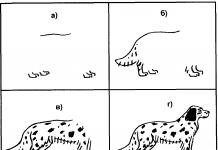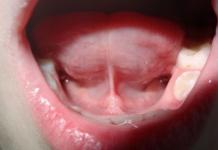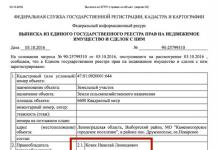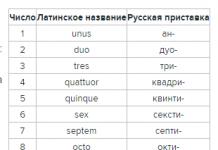Optics is a branch of physics that studies the nature of light radiation, its distribution and interaction with matter.
Light has a dual nature, it has wave and particle properties:
Visible light: wavelength 380-760 nm.
Infrared light: wavelength 760 nm - 1 mm.
Ultraviolet radiation: 10 - 380 nm.
Light is a stream of particles (photons); the corpuscular nature is manifested in the emission and absorption of light (for example, the phenomenon of the photoelectric effect).
Light is an electromagnetic wave; on the EMW scale - the position between radio waves and X-rays - the optical range:
The electromagnetic nature is revealed in the process of light propagation - the phenomena of interference, diffraction, polarization, reflection and refraction.
Refractometry is the most accurate and simple method for the quantitative determination of blood serum proteins - total protein and the percentage of its fractions (albumin, globulins and fibrinogen). Also this method used to determine the purity of water, to identify various substances, etc.
Light, like any electromagnetic wave, propagates from a source in space in all directions. Electromagnetic waves propagate in any medium, including vacuum. In this case, the wave velocity depends on the dielectric and magnetic properties of the medium:
 - relative permittivity of the medium
- relative permittivity of the medium
 - dielectric constant
- dielectric constant
 - magnetic constant
- magnetic constant
 - relative magnetic permeability of the medium
- relative magnetic permeability of the medium
 - speed of light (and an electromagnetic wave) in vacuum.
- speed of light (and an electromagnetic wave) in vacuum.
A beam is any arbitrary direction of propagation of a light wave. In a homogeneous medium, light travels in a straight line at a constant speed.
Reflection of light is a change in the direction of propagation of a light wave at the interface between two media, in which the wave returns to the first medium without changing its speed.
Laws of reflection:




Refraction of light - a change in the direction of propagation of a light wave at the boundary of two media, in which the wave passes into the second medium and its speed changes.
Laws of refraction:

 , Where
, Where
 - refractive index of the second medium relative to the first (relative refractive index)
- refractive index of the second medium relative to the first (relative refractive index)
 And
And  are the absolute refractive indices of the first and second media, i.e. the refractive indices of each of these media relative to vacuum.
are the absolute refractive indices of the first and second media, i.e. the refractive indices of each of these media relative to vacuum.
The physical meaning of the refractive index: the absolute refractive index is equal to the ratio of the speed of light in vacuum to the speed of light in a medium:

From the formula for the speed of an electromagnetic wave it follows:

Thus, the absolute refractive index  , i.e. depends on the properties of the environment. Similarly, the relative refractive index is equal to the ratio of the speed of light in the first medium to its speed in the second medium:
, i.e. depends on the properties of the environment. Similarly, the relative refractive index is equal to the ratio of the speed of light in the first medium to its speed in the second medium:

When light passes from one medium to another, the speed can either increase or decrease, depending on the properties of these media. A medium with a lower absolute refractive index is called optically less dense, and a medium with a higher absolute refractive index is called optically denser.
Features of reflection and refraction of light at the boundary of two media of different optical density:
When light passes from an optically less dense medium to an optically denser medium, the angle of refraction  less than the angle of incidence
less than the angle of incidence  .
.








As the angle of incidence increases  the angle of refraction also increases. Max angle of incidence
the angle of refraction also increases. Max angle of incidence  corresponds to the angle of refraction
corresponds to the angle of refraction  . Thus, rays falling on the interface between two media at any angle from 0 0 to 90 0 pass into the second medium, that is, there is a complete refraction of light. The angle of refraction corresponding to the angle of incidence of 90 0 is called the limiting angle of total refraction (
. Thus, rays falling on the interface between two media at any angle from 0 0 to 90 0 pass into the second medium, that is, there is a complete refraction of light. The angle of refraction corresponding to the angle of incidence of 90 0 is called the limiting angle of total refraction (  ). The value of this angle can be determined based on the law of refraction:
). The value of this angle can be determined based on the law of refraction:



When light passes from an optically denser medium to a less dense one, the angle of refraction  more angle of incidence
more angle of incidence  :
:








As the angle of incidence increases, the angle of refraction also increases. At a certain value of the angle of incidence (  ) the angle of refraction reaches a maximum value of 90 0 , i.e. the refracted beam slides along the interface between the media. With a further increase in the angle of incidence (
) the angle of refraction reaches a maximum value of 90 0 , i.e. the refracted beam slides along the interface between the media. With a further increase in the angle of incidence (  ) the light beam does not pass into the second medium, but is completely reflected into the first medium. This phenomenon is called total internal reflection. The angle of incidence, which corresponds to an angle of refraction of 90 0, is called the limiting angle of total internal reflection (
) the light beam does not pass into the second medium, but is completely reflected into the first medium. This phenomenon is called total internal reflection. The angle of incidence, which corresponds to an angle of refraction of 90 0, is called the limiting angle of total internal reflection ( ). The value of this angle can also be determined based on the law of refraction:
). The value of this angle can also be determined based on the law of refraction:



When a light beam passes from a medium with an index  into the air, whose refractive index
into the air, whose refractive index  approximately equal to one
approximately equal to one
 .
.
Conditions for total internal reflection:
Light passes from an optically denser medium to a less dense one.
The angle of incidence is greater than or equal to the limiting angle of total internal reflection.
In general, at the interface between media, the phenomena of reflection and refraction of light occur together. The intensity of the incident light is equal to the sum of the intensities of the reflected and refracted light:  . As the angle of incidence increases, the intensity of the refracted beam decreases and that of the reflected beam increases. With total internal reflection, all the energy of the light wave returns to the first medium.
. As the angle of incidence increases, the intensity of the refracted beam decreases and that of the reflected beam increases. With total internal reflection, all the energy of the light wave returns to the first medium.
A refractometer is a device for determining the refractive index of a substance. Its work in transmitted light is based on the determination of the limiting angle of refraction, which depends on the refractive index of the investigated liquid. The main part of the refractometer are two glass prisms (1 and 2), which are in contact with the hypotenuse faces. Between these faces there is a gap about 0.1 mm in size, where the test liquid is placed. The hypotenuse face of the upper prism (1) is matte. Light falling on this face is scattered and, having passed through the investigated liquid, falls on the hypotenuse face of the lower prism (2) at different angles from 0 0 to 90 0 . The refractive index of the liquid is less than the refractive index of glass, therefore, all rays enter the lower prism (2) at angles from 0 0 to the limiting refractive angle (  ). A telescope stands in the way of the rays emerging from the second prism. The field of view of the tube is divided into 2 parts: light and dark. The border of light and shadow corresponds to a beam passing at the limiting angle of refraction: the space inside this angle is illuminated, outside it is dark.
). A telescope stands in the way of the rays emerging from the second prism. The field of view of the tube is divided into 2 parts: light and dark. The border of light and shadow corresponds to a beam passing at the limiting angle of refraction: the space inside this angle is illuminated, outside it is dark.
Having measured  and knowing the refractive index N of the prism glass, the refractive index n of the investigated liquid can be found by the formula:
and knowing the refractive index N of the prism glass, the refractive index n of the investigated liquid can be found by the formula:  .
.
For ease of use of the device, the measuring scale is graduated immediately according to the refractive index.
When determining the refractive index of turbid and colored liquids, measurements are made in reflected light to reduce the energy loss when light passes through the liquid. The beam of light from the source passes through the matte side face of the lower prism (2). In this case, the light is scattered and falls on its hypotenuse face, which is in contact with the investigated liquid, at different angles from 0 0 to 90 0 . Rays incident on the liquid at angles less than the limit pass into it, and rays incident at large ones experience total internal reflection and exit through the second side face of the lower prism into the telescope. The field of view is also divided into light and dark parts, but the position of the interface in this case is determined by the limiting angle of total reflection.
However, using this device, it is possible to measure only the refractive index of substances in which it is less than the refractive index of the glass of measuring prisms.
An important component of the refractometer is the dispersion compensator (since it works in white light to eliminate dispersion, i.e. the spectral band) - the Amici prism, which is installed in front of the telescope lens. The Amici prism consists of 3 prisms, selected so that the dispersion in them is equal in magnitude but opposite in sign to the dispersion in prisms 1 and 2. Thus, the total dispersion is reduced to zero. The only ray not deflected after the Amici prism is yellow. The colored rays at the exit from the prism are collected into a beam of white light corresponding to the direction of the yellow beam.
The energy flux F is the energy E passing through any surface per unit time:
 [W]
[W]
If an energy flux Ф 0 falls on the body, then in the general case, part of this flow Ф ref is reflected from the surface of the body, part Ф pr passes through the body and part Ф absorb is absorbed by body particles. Thus, the total energy balance: Ф 0 = Ф neg + Ф absorb + Ф pr. Dividing both parts by Ф 0 we get:

Attitude  - reflection coefficient, and it is from 0 to 1.
- reflection coefficient, and it is from 0 to 1.
Attitude  - absorption coefficient, and it is from 0 to 1.
- absorption coefficient, and it is from 0 to 1.
Attitude  - transmittance, and it is from 0 to 1.
- transmittance, and it is from 0 to 1.
If the body is absolutely transparent, i.e. does not absorb radiation, and  , Then
, Then  . If the body is absolutely opaque, i.e.
. If the body is absolutely opaque, i.e.  , Then
, Then  . If
. If  , then the body absorbs all the rays falling on it.
, then the body absorbs all the rays falling on it.
These coefficients depend on the wavelength of light and the absolute temperature of the body:
The coefficients of reflection, absorption and transmission at a certain wavelength are called monochromatic. In the record, this is usually indicated by the subscript "  » with an appropriate characteristic, for example,
» with an appropriate characteristic, for example,  .
.
Laws of attenuation of light as it passes through matter.
Radiation intensity is a value numerically equal to  , Where
, Where
S is the area of the surface perpendicular to the direction of wave propagation, through which the energy E is transferred.
Let I 0 be the intensity of light incident on a certain absorbing layer, I X be the intensity of light after passing through a layer of thickness X. In each thin layer, dX is absorbed dI = - kIdX (the "-" sign indicates a decrease in intensity). Dividing the variables, we get:
 . Let's solve the differential equation:
. Let's solve the differential equation:






The last equation is the Bouguer absorption law. The proportionality factor k in Bouguer's law depends on the wavelength of light:  - and for a given wave is called the monochromatic natural absorption index. In addition, k depends on the type of substance.
- and for a given wave is called the monochromatic natural absorption index. In addition, k depends on the type of substance.
The physical meaning of the natural absorption index: this is the reciprocal of the thickness of the absorbing layer of the substance, during the passage of which the light intensity will decrease by a factor of e. The dimension k in the SI system of units is [m -1].
For sufficiently dilute solutions, in which only the solute (but not the solvent) absorbs, a relation called Beer's law is valid:  , Where
, Where
WITH - molar concentration absorbing centers (chromophore molecules);
 - natural molar absorption rate, i.e. absorption rate of a single concentration solution. The dimension is [mol -1 meter -1].
- natural molar absorption rate, i.e. absorption rate of a single concentration solution. The dimension is [mol -1 meter -1].
According to Beer's law, the absorption index is directly proportional to the concentration of the solute (the molar index, unlike k, does not depend on the concentration).
When substituting Beer's law into the equation of Bouguer's law, we obtain the combined Lambert-Bouguer-Beer law:
 .
.
However, in practice, they usually take the base not e, but 10:
 , where the molar absorption coefficient
, where the molar absorption coefficient  , because
, because  . In spectroscopy, the molar absorption index is called molar extinction.
. In spectroscopy, the molar absorption index is called molar extinction.
Light absorption spectra. concentration calorimetry.
The value equal to the decimal logarithm of the reciprocal of the transmittance is the optical density of the solution:
 .
.
Addiction  from
from  or
or  from
from  is the absorption spectrum of the given substance. Optical density can be measured in practice using a spectrophotometer instrument. this makes it possible to determine the unknown concentration of a solution of a chromophore substance from the known concentration of a solution of the same substance. By measuring the optical densities D 0 of a solution of known concentration C 0 and D X of a solution of unknown concentration C X at the same thickness of the absorbing layer (cell thickness), we obtain the following proportion:
is the absorption spectrum of the given substance. Optical density can be measured in practice using a spectrophotometer instrument. this makes it possible to determine the unknown concentration of a solution of a chromophore substance from the known concentration of a solution of the same substance. By measuring the optical densities D 0 of a solution of known concentration C 0 and D X of a solution of unknown concentration C X at the same thickness of the absorbing layer (cell thickness), we obtain the following proportion:
 , where
, where 
In medicine, this method is widely used, as it allows you to work with low concentrations of a substance (10 -8 - 10 -12 M). In particular, it is used in forensic medicine.
Wednesday with a large absolute refractive index called optically denser. If light passes from optically less dense environment V optically denser(for example, from air to water or glass), then the angle of incidence is greater than the angle of refraction.
1 What is called energetic luminosity RE(integrated energy luminosity) - energy luminosity determines the amount of energy emitted from a single surface per unit time in the entire frequency range from 0 to ∞ at a given temperature T.
2 what is called emissivity
The total radiation energy flux per unit body surface over the entire frequency range
It is called the integral emissivity of the body or its energy luminosity. In the SI system, radiant luminosity is measured in W/m 2 , and spectral emissivity is measured in J/m 2 .
The emissivity of a body can also be represented as a function of the radiation wavelength, which is related to the frequency through the speed of light in vacuum by the formula. Indeed, separating the radiation fluxes falling on the frequency interval and on the corresponding wavelength interval , and equating them to each other, we find that
3 absorption capacity
Absorption capacity of the body- this is a dimensionless quantity showing what part of the radiation in the wavelength range from to incident per unit surface of the body, the body absorbs per unit time.
4 reflectivity
Reflectivity- a value that describes the ability of any surface or interface between two media to reflect the flow incident on it electromagnetic radiation. Widely used in optics, quantitatively characterized by the reflection coefficient. Diffuse reflection is characterized by a quantity called albedo.
The ability of materials to reflect radiation depends on the angle of incidence, on the polarization of the incident radiation, and also on its spectrum. The dependence of the reflectivity of the body surface on the wavelength of light in the visible light region is perceived by the human eye as the color of the body.
The dependence of the reflectivity of materials on the wavelength is of great importance in the construction of optical systems. To obtain the desired properties of materials in terms of reflection and transmission of light, optical coating is sometimes used, as, for example, in the production of dielectric mirrors or interference filters.
7 Stefan Boltzmann's Law
where ε is the degree of emissivity (for all substances ε< 1, для абсолютно черного тела ε = 1). При помощи законаПланка для излучения, постоянную σ можно определелить как
where is Planck's constant, k is the Boltzmann constant, c is the speed of light.
Numerical value J · s -1 · m -2 · K -4.
10 Law of Mixing Wine
the quantum physics
what is the rest mass of a photon =0
10. name the 3 main elements that make up an optical quantum beam
Optical quantum generator consists of three main elements: active substance, which is a source of induced radiation; a source of excitation (pumping), which supplies external energy to the active substance; resonant system providing radiation focusing.
11 name the properties characteristic of laser radiation
Special properties of laser light are monochromaticity, coherence, polarization and low beam divergence.
Dielectrics Metals Semiconductors
1 Work function of electron from metal
Metals contain conduction electrons that form an electron gas and participate in thermal motion. Since the conduction electrons are kept inside the metal, then, therefore, near the surface there are forces acting on the electrons and directed inside the metal. In order for an electron to leave the metal beyond its limits, a certain work A must be done against these forces, which is called electron work function from metal. This work, of course, is different for different metals.
The potential energy of an electron inside a metal is constant and equal to:
W p \u003d -eφ , where j is the potential electric field inside the metal.
When an electron passes through the surface electron layer, the potential energy rapidly decreases by the value of the work function and becomes equal to zero outside the metal. The energy distribution of an electron inside a metal can be represented as a potential well.
In the interpretation considered above, the work function of an electron is equal to the depth of the potential well, i.e.
This result corresponds to the classical electronic theory of metals, in which it is assumed that the velocity of electrons in a metal obeys the Maxwell distribution law and is equal to zero at absolute zero temperature. However, in reality, conduction electrons obey the Fermi-Dirac quantum statistics, according to which, at absolute zero the speed of electrons and, accordingly, their energy is different from zero.
The maximum value of the energy that electrons have at absolute zero is called the Fermi energy E F . The quantum theory of conductivity of metals, based on these statistics, gives a different interpretation of the work function. Work function of an electron from a metal is equal to the difference between the height of the potential barrier eφ and the Fermi energy.
A out \u003d eφ "- E F
where φ" is the average value of the potential of the electric field inside the metal.
2Name the current carrier in semiconductors
In semiconductors, charge carriers are electrons and holes. The ratio of their concentrations determines conduction type semiconductor. Those carriers whose concentration is higher are called main charge carriers, and carriers of another type - non-core.
3. what kind of extrinsic semiconductors are called n-type conductors
n-type semiconductors- a semiconductor in which the main charge carriers are conduction electrons.
4 which doped semiconductors are called p-type conductors
p-type semiconductor A semiconductor in which holes are the majority charge carriers.
P-type semiconductors are obtained by doping their own semiconductors with acceptors. For semiconductors of the fourth group periodic table, such as silicon and germanium, impurities can be acceptors chemical elements third group - boron, aluminum
5 volt current characteristic of a semiconductor diode
The physical meaning of the refractive index. Light is refracted due to a change in the speed of its propagation when moving from one medium to another. The refractive index of the second medium relative to the first is numerically equal to the ratio of the speed of light in the first medium to the speed of light in the second medium:
Thus, the refractive index shows how many times the speed of light in the medium from which the beam exits is greater (less) than the speed of light in the medium into which it enters.
Since the speed of propagation of electromagnetic waves in vacuum is constant, it is advisable to determine the refractive indices various environments relative to vacuum. Speed ratio With propagation of light in a vacuum to the speed of its propagation in a given medium is called absolute refractive index given substance () and is the main characteristic of its optical properties,
 ,
,
those. the refractive index of the second medium relative to the first is equal to the ratio of the absolute indices of these media.
Usually, the optical properties of a substance are characterized by the refractive index n relative to air, which differs little from the absolute refractive index. In this case, the medium, in which the absolute index is greater, is called optically denser.
Limiting angle of refraction. If light passes from a medium with a lower refractive index to a medium with a higher refractive index ( n 1< n 2 ), then the angle of refraction is less than the angle of incidence
r< i (Fig. 3).

Rice. 3. Refraction of light during the transition
from optically less dense medium to medium
optically denser.
As the angle of incidence increases to i m = 90° (beam 3, Fig. 2) light in the second medium will propagate only within the angle r pr called limiting angle of refraction. In the region of the second medium within an angle additional to the limiting angle of refraction (90° - i pr ), no light penetrates (this area is shaded in Fig. 3).
Limit angle of refraction r pr
But sin i m = 1, therefore .
The phenomenon of total internal reflection. When light passes from a medium with a high refractive index n 1 > n 2 (Fig. 4), then the angle of refraction is greater than the angle of incidence. Light is refracted (passes into the second medium) only within the angle of incidence i pr , which corresponds to the angle of refraction rm = 90°.

Rice. 4. Refraction of light during the transition from an optically denser medium to a medium
less optically dense.
Light incident at a large angle is completely reflected from the boundary of the media (Fig. 4 beam 3). This phenomenon is called total internal reflection, and the angle of incidence i pr is the limiting angle of total internal reflection.
Limiting angle of total internal reflection i pr determined according to the condition:
 , then sin r m =1, therefore, .
, then sin r m =1, therefore, .
If light travels from any medium into a vacuum or into air, then
Due to the reversibility of the path of rays for these two media, the limiting angle of refraction in the transition from the first medium to the second is equal to the limiting angle of total internal reflection when the beam passes from the second medium to the first.
The limiting angle of total internal reflection for glass is less than 42°. Therefore, rays traveling through glass and incident on its surface at an angle of 45° are completely reflected. This property of glass is used in rotary (Fig. 5a) and reversible (Fig. 4b) prisms, which are often used in optical instruments.
Rice. 5: a – rotary prism; b - reverse prism.
fiber optics. Total internal reflection is used in the construction of flexible light guides. Light, getting inside a transparent fiber surrounded by a substance with a lower refractive index, is reflected many times and propagates along this fiber (Fig. 6).

Fig.6. The passage of light inside a transparent fiber surrounded by matter
with a lower refractive index.
To transmit high light fluxes and maintain the flexibility of the light guide system, individual fibers are assembled into bundles - light guides. The branch of optics that deals with the transmission of light and images through light guides is called fiber optics. The same term refers to the fiber-optic parts and devices themselves. In medicine, light guides are used to illuminate internal cavities with cold light and transmit images.
Instruments for determining the refractive index of substances are called refractometers(Fig. 7).

Fig.7. Optical scheme of the refractometer.
1 - mirror, 2 - measuring head, 3 - system of prisms to eliminate dispersion, 4 - lens, 5 - rotary prism (beam rotation by 90 0), 6 - scale (in some refractometers
there are two scales: the scale of refractive indices and the scale of the concentration of solutions),
7 - eyepiece.
The main part of the refractometer is a measuring head, consisting of two prisms: an illuminating one, which is located in the folding part of the head, and a measuring one.
At the exit of the illuminating prism, its matte surface creates a scattered beam of light that passes through the test liquid (2-3 drops) between the prisms. Rays fall on the surface of the measuring prism at different angles, including at an angle of 90 0 . In the measuring prism, the rays are collected in the region of the limiting angle of refraction, which explains the formation of a light-shadow boundary on the device screen.

Fig.8. Beam path in the measuring head:
1 – illuminating prism, 2 – investigated liquid,
3 - measuring prism, 4 - screen.
DETERMINATION OF THE PERCENTAGE OF SUGAR IN SOLUTION
Natural and polarized light. visible light- This electromagnetic waves with an oscillation frequency in the range from 4∙10 14 to 7.5∙10 14 Hz. Electromagnetic waves are transverse: the vectors E and H of the strengths of the electric and magnetic fields are mutually perpendicular and lie in a plane perpendicular to the wave propagation velocity vector.
Due to the fact that both the chemical and biological effects of light are mainly associated with the electrical component of the electromagnetic wave, the vector E the intensity of this field is called light vector, and the plane of oscillations of this vector is the plane of oscillation of the light wave.
In any light source, waves are emitted by many atoms and molecules, the light vectors of these waves are located in various planes, and the oscillations occur in various phases. Consequently, the plane of oscillations of the light vector of the resulting wave continuously changes its position in space (Fig. 1). This light is called natural, or unpolarized.

Rice. 1. Schematic representation of a beam and natural light.
If we choose two mutually perpendicular planes passing through a beam of natural light and project the vectors E on the plane, then on average these projections will be the same. Thus, it is convenient to depict a ray of natural light as a straight line on which the same number of both projections are located in the form of dashes and dots:
When light passes through crystals, it is possible to obtain light whose wave oscillation plane occupies a constant position in space. This light is called flat- or linearly polarized. Due to the orderly arrangement of atoms and molecules in a spatial lattice, the crystal transmits only light vector oscillations that occur in a certain plane characteristic of a given lattice.
A plane polarized light wave is conveniently depicted as follows:
The polarization of light can also be partial. In this case, the amplitude of oscillations of the light vector in any one plane significantly exceeds the amplitudes of oscillations in other planes.
Partially polarized light can be conventionally depicted as follows: , etc. The ratio of the number of dashes and dots determines the degree of light polarization.
In all methods of converting natural light into polarized light, components with a well-defined orientation of the polarization plane are completely or partially selected from natural light.
Methods for obtaining polarized light: a) reflection and refraction of light at the boundary of two dielectrics; b) transmission of light through optically anisotropic uniaxial crystals; c) the transmission of light through media, the optical anisotropy of which is artificially created by the action of an electric or magnetic field, as well as due to deformation. These methods are based on the phenomenon anisotropy.
Anisotropy is the dependence of a number of properties (mechanical, thermal, electrical, optical) on the direction. Bodies whose properties are the same in all directions are called isotropic.
Polarization is also observed during light scattering. The degree of polarization is the higher, the smaller the size of the particles on which scattering occurs.
Devices designed to produce polarized light are called polarizers.
Polarization of light during reflection and refraction at the interface between two dielectrics. When natural light is reflected and refracted at the interface between two isotropic dielectrics, its linear polarization occurs. At an arbitrary angle of incidence, the polarization of the reflected light is partial. The reflected beam is dominated by oscillations perpendicular to the plane of incidence, while the refracted beam is dominated by oscillations parallel to it (Fig. 2).

Rice. 2. Partial polarization of natural light during reflection and refraction
If the angle of incidence satisfies the condition tg i B = n 21, then the reflected light is completely polarized (Brewster's law), and the refracted beam is polarized not completely, but maximally (Fig. 3). In this case, the reflected and refracted rays are mutually perpendicular.
is the relative refractive index of the two media, i B is the Brewster angle.

Rice. 3. Total polarization of the reflected beam during reflection and refraction
at the interface between two isotropic dielectrics.
Double refraction. There are a number of crystals (calcite, quartz, etc.) in which a beam of light, being refracted, splits into two beams with different properties. Calcite (Icelandic spar) is a crystal with a hexagonal lattice. The axis of symmetry of the hexagonal prism that forms its cell is called the optical axis. The optical axis is not a line, but a direction in the crystal. Any line parallel to this direction is also an optical axis.
If a plate is cut out of a calcite crystal so that its faces are perpendicular to the optical axis, and a beam of light is directed along the optical axis, then no changes will occur in it. If, however, the beam is directed at an angle to the optical axis, then it will be divided into two beams (Fig. 4), of which one is called ordinary, the second - extraordinary.

Rice. 4. Birefringence when light passes through a plate of calcite.
MN is the optical axis.
An ordinary beam lies in the plane of incidence and has the usual refractive index for a given substance. Not ordinary beam lies in the plane passing through the incident beam and the optical axis of the crystal, drawn at the point of incidence of the beam. This plane is called principal plane of the crystal. The refractive indices for ordinary and extraordinary beams are different.
Both ordinary and extraordinary rays are polarized. The plane of oscillation of ordinary rays is perpendicular to the principal plane. The oscillations of the extraordinary rays occur in the main plane of the crystal.
The phenomenon of birefringence is due to the anisotropy of crystals. Along the optical axis, the speed of a light wave for ordinary and extraordinary rays is the same. In other directions, the velocity of an extraordinary wave in calcite is greater than that of an ordinary one. The greatest difference between the velocities of both waves occurs in the direction perpendicular to the optical axis.
According to the Huygens principle, with birefringence at each point of the surface of a wave reaching the crystal boundary, two elementary waves simultaneously arise (not one, as in ordinary media), which propagate in the crystal.
The propagation speed of one wave in all directions is the same, i.e. wave has a spherical shape and is called ordinary. The speed of propagation of another wave in the direction of the optical axis of the crystal is the same as the speed of an ordinary wave, and in the direction perpendicular to the optical axis, it differs from it. The wave has an ellipsoid shape and is called extraordinary(Fig.5).

Rice. 5. Propagation of an ordinary (o) and extraordinary (e) wave in a crystal
with double refraction.
Prism Nicholas. To obtain polarized light, a Nicol polarizing prism is used. A prism of a certain shape and size is cut out of calcite, then it is sawn along a diagonal plane and glued with Canadian balsam. When a light beam is incident on the upper face along the prism axis (Fig. 6), the extraordinary beam is incident on the gluing plane at a smaller angle and passes through almost without changing direction. An ordinary beam falls at an angle greater than the angle of total reflection for Canadian balsam, is reflected from the gluing plane and absorbed by the blackened face of the prism. The Nicol prism produces fully polarized light, the plane of oscillation of which lies in the principal plane of the prism.
Rice. 6. Nicolas prism. Scheme of the passage of an ordinary
and extraordinary rays.
Dichroism. There are crystals that absorb ordinary and extraordinary rays in different ways. So, if a natural light beam is directed to a tourmaline crystal perpendicular to the direction of the optical axis, then with a plate thickness of only a few millimeters, the ordinary beam will be completely absorbed, and only the extraordinary beam will come out of the crystal (Fig. 7).

Rice. 7. Passage of light through a tourmaline crystal.
The different nature of the absorption of ordinary and extraordinary rays is called absorption anisotropy, or dichroism. Thus, tourmaline crystals can also be used as polarizers.
Polaroids. Currently, polarizers are widely used. polaroids. To make a polaroid, a transparent film is glued between two plates of glass or plexiglass, which contains crystals of a dichroic substance polarizing light (for example, iodoquinone sulfate). During the film manufacturing process, the crystals are oriented so that their optical axes are parallel. The whole system is fixed in a frame.
The low cost of polaroids and the possibility of manufacturing plates with a large area ensured their wide application in practice.
Analysis of polarized light. To study the nature and degree of polarization of light, devices called analyzers. As analyzers, the same devices are used that serve to obtain linearly polarized light - polarizers, but adapted for rotation around the longitudinal axis. The analyzer passes only vibrations that coincide with its main plane. Otherwise, only the oscillation component that coincides with this plane passes through the analyzer.
If the light wave entering the analyzer is linearly polarized, then the intensity of the wave leaving the analyzer satisfies Malus' law:
![]() ,
,
where I 0 is the intensity of the incoming light, φ is the angle between the planes of the incoming light and the light transmitted by the analyzer.
The passage of light through the polarizer-analyzer system is shown schematically in fig. 8.

Rice. Fig. 8. Scheme of the passage of light through the polarizer-analyzer system (P - polarizer,
A - analyzer, E - screen):
a) the main planes of the polarizer and analyzer coincide;
b) the main planes of the polarizer and analyzer are located at a certain angle;
c) the main planes of the polarizer and analyzer are mutually perpendicular.
If the main planes of the polarizer and analyzer coincide, then the light completely passes through the analyzer and illuminates the screen (Fig. 7a). If they are located at a certain angle, the light passes through the analyzer, but is attenuated (Fig. 7b) the more, the closer this angle is to 90 0 . If these planes are mutually perpendicular, then the light is completely extinguished by the analyzer (Fig. 7c)
Rotation of the plane of oscillation of polarized light. Polarimetry. Some crystals as well as solutions organic matter have the property of rotating the plane of oscillation of the polarized light passing through them. These substances are called optically A active. These include sugars, acids, alkaloids, etc.
For the majority of optically active substances, the existence of two modifications was found that rotates the plane of polarization clockwise and counterclockwise, respectively (for an observer looking towards the beam). The first modification is called dextrorotatory, or positive second - levorotary, or negative.
The natural optical activity of a substance in a non-crystalline state is due to the asymmetry of the molecules. In crystalline substances, optical activity can also be due to the peculiarities of the arrangement of molecules in the lattice.
IN solids the angle φ of rotation of the plane of polarization is directly proportional to the length d of the path of the light beam in the body:
where α is rotational ability (specific rotation), depending on the type of substance, temperature and wavelength. For left- and right-rotation modifications, the rotational abilities are the same in magnitude.
For solutions, the angle of rotation of the polarization plane
![]() ,
,
where α is the specific rotation, c is the concentration of the optically active substance in the solution. The value of α depends on the nature of the optically active substance and solvent, temperature and wavelength of light. Specific rotation- this is a 100 times increased rotation angle for a solution 1 dm thick at a substance concentration of 1 gram per 100 cm 3 of solution at a temperature of 20 0 C and at a wavelength of light λ=589 nm. A very sensitive method for determining the concentration c, based on this ratio, is called polarimetry (saccharimetry).
The dependence of the rotation of the polarization plane on the wavelength of light is called rotational dispersion. In the first approximation, there is Bio's Law:
where A is a coefficient depending on the nature of the substance and temperature.
In a clinical setting, the method polarimetry used to determine the concentration of sugar in the urine. The device used for this is called saccharimeter(Fig. 9).
Rice. 9. Optical layout of the saccharimeter:
And - a source of natural light;
C - light filter (monochromator), which ensures the coordination of the device operation
with Biot's law;
L is a converging lens that gives a parallel beam of light at the output;
P - polarizer;
K – tube with test solution;
A - analyzer mounted on a rotating disk D with divisions.
When conducting a study, the analyzer is first set to the maximum darkening of the field of view without the test solution. Then a tube with a solution is placed in the device and, rotating the analyzer, the field of view is darkened again. The smaller of the two angles through which the analyzer must be rotated is the angle of rotation for the analyte. The angle is used to calculate the concentration of sugar in the solution.
To simplify the calculations, the tube with the solution is made so long that the angle of rotation of the analyzer (in degrees) is numerically equal to the concentration With solution (in grams per 100 cm 3). The length of the tube for glucose is 19 cm.
polarizing microscopy. The method is based on anisotropy some components of cells and tissues that appear when they are observed in polarized light. Structures consisting of molecules arranged in parallel, or disks arranged in the form of a stack, when introduced into a medium with a refractive index that differs from the refractive index of the particles of the structure, exhibit the ability to double refraction. This means that the structure will only transmit polarized light if the plane of polarization is parallel to the long axes of the particles. This remains valid even when the particles do not have their own birefringence. Optical anisotropy observed in muscle, connective tissue (collagen) and nerve fibers.
The very name of skeletal muscle striated" due to the difference in the optical properties of individual sections of the muscle fiber. It consists of alternating darker and lighter areas of the tissue substance. This gives the fiber a transverse striation. The study of the muscle fiber in polarized light reveals that the darker areas are anisotropic and have properties birefringence, while the darker areas are isotropic. Collagen fibers are anisotropic, their optical axis is located along the fiber axis. Micelles in pulp neurofibrils are also anisotropic, but their optical axes are located in radial directions. A polarizing microscope is used for histological examination of these structures.
The most important component of a polarizing microscope is the polarizer, which is located between the light source and the capacitor. In addition, the microscope has a rotating stage or sample holder, an analyzer located between the objective and the eyepiece, which can be installed so that its axis is perpendicular to the polarizer axis, and a compensator.
When the polarizer and analyzer are crossed and the object is missing or isotropic the field appears uniformly dark. If there is an object with birefringence, and it is located so that its axis is at an angle to the plane of polarization, different from 0 0 or from 90 0 , it will divide the polarized light into two components - parallel and perpendicular to the plane of the analyzer. Therefore, some of the light will pass through the analyzer, resulting in bright image object on a dark background. When the object rotates, the brightness of its image will change, reaching a maximum at an angle of 45 0 relative to the polarizer or analyzer.
Polarizing microscopy is used to study the orientation of molecules in biological structures (e.g. muscle cells), as well as during the observation of structures invisible by other methods (e.g. the mitotic spindle during cell division), identification of the helical structure.
Polarized light is used in model conditions to assess the mechanical stresses that occur in bone tissues. This method is based on the phenomenon of photoelasticity, which consists in the appearance of optical anisotropy in initially isotropic solids under the action of mechanical loads.
DETERMINATION OF THE LIGHT WAVE LENGTH USING A DIFFRACTION GRATING
Light interference. Light interference is a phenomenon that occurs when light waves are superimposed and is accompanied by their amplification or attenuation. A stable interference pattern arises when coherent waves are superimposed. Coherent waves are called waves with equal frequencies and the same phases or having a constant phase shift. Amplification of light waves during interference (maximum condition) occurs if Δ fits an even number of half-wavelengths:
Where k – maximum order, k=0,±1,±2,±,…±n;
λ is the length of the light wave.
Weakening of light waves during interference (minimum condition) is observed if an odd number of half-wavelengths fit into the optical path difference Δ:
![]()
Where k is the order of the minimum.
The optical path difference of two beams is the difference in distances from the sources to the point of observation of the interference pattern.
Interference in thin films. Interference in thin films can be observed in soap bubbles, in a spot of kerosene on the surface of water when illuminated by sunlight.
Let beam 1 fall on the surface of a thin film (see Fig. 2). The beam, refracted at the air-film boundary, passes through the film, is reflected from it inner surface, approaches the outer surface of the film, is refracted at the film-air interface, and the beam emerges. We direct beam 2 to the beam exit point, which passes parallel to beam 1. Beam 2 is reflected from the surface of the film , superimposed on beam , and both beams interfere.
When illuminating the film with polychromatic light, we get a rainbow picture. This is due to the fact that the film is not uniform in thickness. Consequently, path differences of various magnitudes arise, which correspond to different wavelengths (colored soap films, iridescent colors of the wings of some insects and birds, films of oil or oils on the surface of water, etc.).
Light interference is used in devices - interferometers. Interferometers are optical devices that can be used to spatially separate two beams and create a certain path difference between them. Interferometers are used to determine the wavelength with a high degree the accuracy of small distances, the refractive indices of substances and the determination of the quality of optical surfaces.
For sanitary and hygienic purposes, the interferometer is used to determine the content of harmful gases.
The combination of an interferometer and a microscope (interference microscope) is used in biology to measure the refractive index, dry matter concentration, and thickness of transparent micro-objects.
Huygens-Fresnel principle. According to Huygens, each point of the medium, to which the primary wave reaches at a given moment, is a source of secondary waves. Fresnel refined this position of Huygens by adding that the secondary waves are coherent, i.e. when superimposed, they will give a stable interference pattern.
Diffraction of light. Diffraction of light is the phenomenon of deviation of light from rectilinear propagation.
Diffraction in parallel beams from one slit. Let on the target wide V a parallel beam of monochromatic light falls (see Fig. 3):
A lens is installed in the path of the rays L , in the focal plane of which the screen is located E . Most beams do not diffract; do not change their direction, and they are focused by the lens L in the center of the screen, forming a central maximum or zero-order maximum. Rays diffracting at equal diffraction angles φ , will form maxima on the screen 1,2,3,…, n - orders.
Thus, the diffraction pattern obtained from one slit in parallel beams when illuminated with monochromatic light is a bright stripe with maximum illumination in the center of the screen, then comes a dark stripe (minimum of the 1st order), then comes a bright stripe (maximum of the 1st order). order), dark band (minimum of the 2nd order), maximum of the 2nd order, etc. The diffraction pattern is symmetrical with respect to the central maximum. When the slit is illuminated with white light, a system of colored bands is formed on the screen, only the central maximum will retain the color of the incident light.
Conditions max And min diffraction. If in the optical path difference Δ fit an odd number of segments equal to , then there is an increase in light intensity ( max diffraction):
![]()
Where k is the order of the maximum; k =±1,±2,±…,± n;
λ is the wavelength.
If in the optical path difference Δ fit an even number of segments equal to , then there is a weakening of the light intensity ( min diffraction):
Where k is the order of the minimum.
Diffraction grating. A diffraction grating consists of alternating bands that are opaque to the passage of light with bands (slits) that are transparent to light and of equal width.
The main characteristic of a diffraction grating is its period d . the period of the diffraction grating is the total width of the transparent and opaque bands:
A diffraction grating is used in optical instruments to enhance the resolution of the instrument. The resolution of a diffraction grating depends on the order of the spectrum k and on the number of strokes N :
Where R - resolution.
Derivation of the diffraction grating formula. Let us direct two parallel beams onto the diffraction grating: 1 and 2 so that the distance between them is equal to the grating period d .
At points A And IN beams 1 and 2 diffract, deviating from the rectilinear direction at an angle φ is the diffraction angle.
Rays And focused by lens L onto a screen located in the focal plane of the lens (Fig. 5). Each slit of the grating can be considered as a source of secondary waves (the Huygens-Fresnel principle). On the screen at point D, we observe the maximum of the interference pattern.
From a point A on the path of the beam drop the perpendicular and get point C. consider a triangle ABC : right triangle РВАС=Рφ as angles with mutually perpendicular sides. From Δ ABC:
Where AB=d (by construction),
SW = ∆ is the optical path difference.
Since at point D we observe max interference, then
![]()
Where k is the order of the maximum,
λ is the length of the light wave.
Plugging in the values AB=d, into the formula for sinφ :
From here we get:
IN general view the diffraction grating formula has the form:
The ± signs show that the interference pattern on the screen is symmetrical with respect to the central maximum.
Physical foundations holography. Holography is a method of recording and reconstructing a wave field, which is based on the phenomena of wave diffraction and interference. If only the intensity of the waves reflected from the object is recorded on a regular photograph, then the phases of the waves are additionally recorded on the hologram, which provides additional information about the object and makes it possible to obtain a three-dimensional image of the object.
Topics of the USE codifier: the law of refraction of light, total internal reflection.
At the interface between two transparent media, along with the reflection of light, its reflection is observed. refraction- light, passing into another medium, changes the direction of its propagation.
Refraction of a light beam occurs when it oblique falling on the interface (although not always - read on about total internal reflection). If the beam falls perpendicular to the surface, then there will be no refraction - in the second medium, the beam will retain its direction and also go perpendicular to the surface.
Law of refraction (special case).
We will start with the particular case where one of the media is air. This situation is present in the vast majority of tasks. We will discuss the relevant special case the law of refraction, and only then we will give its most general formulation.
Suppose that a ray of light traveling through air falls obliquely on the surface of glass, water, or some other transparent medium. When passing into the medium, the beam is refracted, and its further course is shown in Fig. 1 .
A perpendicular is drawn at the point of incidence (or, as they say, normal) to the surface of the medium. The beam, as before, is called incident beam, and the angle between the incident ray and the normal is angle of incidence. The beam is refracted beam; the angle between the refracted ray and the normal to the surface is called angle of refraction.
Any transparent medium is characterized by a quantity called refractive index this environment. The refractive indices of various media can be found in the tables. For example, for glass, and for water. In general, for any environment; the refractive index is equal to unity only in vacuum. At air, therefore, for air with sufficient accuracy can be assumed in problems (in optics, air does not differ much from vacuum).
Law of refraction (transition "air-medium") .
1) The incident ray, the refracted ray and the normal to the surface drawn at the point of incidence lie in the same plane.
2) The ratio of the sine of the angle of incidence to the sine of the angle of refraction is equal to the refractive index of the medium:
. (1)
Since from relation (1) it follows that , that is - the angle of refraction is less than the angle of incidence. Remember: passing from air to the medium, the beam after refraction goes closer to the normal.
The refractive index is directly related to the speed of light in a given medium. This speed is always less than the speed of light in vacuum: . And it turns out that
. (2)
Why this happens, we will understand when studying wave optics. In the meantime, let's combine the formulas. (1) and (2) :
. (3)
Since the refractive index of air is very close to unity, we can assume that the speed of light in air is approximately equal to the speed of light in vacuum. Taking this into account and looking at the formula . (3) , we conclude: the ratio of the sine of the angle of incidence to the sine of the angle of refraction is equal to the ratio of the speed of light in air to the speed of light in a medium.
Reversibility of light rays.
Now consider the reverse course of the beam: its refraction during the transition from the medium to the air. The following useful principle will help us here.
The principle of reversibility of light rays. The trajectory of the beam does not depend on whether the beam propagates in the forward or backward direction. Moving in the opposite direction, the beam will follow exactly the same path as in the forward direction.
According to the principle of reversibility, when passing from the medium to the air, the beam will follow the same trajectory as during the corresponding transition from air to the medium (Fig. 2) The only difference in Fig. 2 from fig. 1 is that the direction of the beam has changed to the opposite.
Since the geometric picture has not changed, formula (1) will remain the same: the ratio of the sine of the angle to the sine of the angle is still equal to the refractive index of the medium. True, now the angles have changed roles: the angle has become the angle of incidence, and the angle has become the angle of refraction.
In any case, no matter how the beam goes - from the air to the environment or from the environment to the air - the following simple rule works. We take two angles - the angle of incidence and the angle of refraction; the ratio of the sine of the larger angle to the sine of the smaller angle is equal to the refractive index of the medium.
Now we are fully prepared to discuss the law of refraction in the most general case.
Law of refraction (general case).
Let light pass from medium 1 with refractive index to medium 2 with refractive index . A medium with a high refractive index is called optically denser; accordingly, a medium with a lower refractive index is called optically less dense.
Passing from an optically less dense medium to an optically denser one, the light beam after refraction goes closer to the normal (Fig. 3). In this case, the angle of incidence is greater than the angle of refraction: .
 |
| Rice. 3. |
On the contrary, when passing from an optically denser medium to an optically less dense one, the beam deviates further from the normal (Fig. 4). Here the angle of incidence is less than the angle of refraction:
 |
| Rice. 4. |
It turns out that both of these cases are covered by one formula - common law refraction, valid for any two transparent media.
The law of refraction.
1) The incident beam, the refracted beam and the normal to the interface between the media, drawn at the point of incidence, lie in the same plane.
2) The ratio of the sine of the angle of incidence to the sine of the angle of refraction is equal to the ratio of the refractive index of the second medium to the refractive index of the first medium:
. (4)
It is easy to see that the previously formulated law of refraction for the "air-medium" transition is a special case of this law. Indeed, assuming in the formula (4) , we will come to the formula (1) .
Recall now that the refractive index is the ratio of the speed of light in vacuum to the speed of light in a given medium: . Substituting this into (4) , we get:
. (5)
Formula (5) generalizes formula (3) in a natural way. The ratio of the sine of the angle of incidence to the sine of the angle of refraction is equal to the ratio of the speed of light in the first medium to the speed of light in the second medium.
total internal reflection.
When light rays pass from an optically denser medium to an optically less dense one, an interesting phenomenon is observed - complete internal reflection. Let's see what it is.
Let us assume for definiteness that light goes from water to air. Let us assume that there is a point source of light in the depths of the reservoir, emitting rays in all directions. We will consider some of these rays (Fig. 5).
The beam falls on the surface of the water at the smallest angle. This beam is partly refracted (beam ) and partly reflected back into the water (beam ). Thus, part of the energy of the incident beam is transferred to the refracted beam, and the rest of the energy is transferred to the reflected beam.
The angle of incidence of the beam is greater. This beam is also divided into two beams - refracted and reflected. But the energy of the original beam is distributed between them in a different way: the refracted beam will be dimmer than the beam (that is, it will receive a smaller share of energy), and the reflected beam will be correspondingly brighter than the beam (it will receive a larger share of energy).
As the angle of incidence increases, the same regularity can be traced: an increasing share of the energy of the incident beam goes to the reflected beam, and an ever smaller share to the refracted beam. The refracted beam becomes dimmer and dimmer, and at some point it disappears completely!
This disappearance occurs when the angle of incidence is reached, which corresponds to the angle of refraction. In this situation, the refracted beam would have to go parallel to the water surface, but there is nothing to go - all the energy of the incident beam went entirely to the reflected beam.
With a further increase in the angle of incidence, the refracted beam will even be absent.
The described phenomenon is the total internal reflection. Water does not emit outward rays with angles of incidence equal to or greater than a certain value - all such rays are entirely reflected back into the water. Angle is called limiting angle of total reflection.
The value is easy to find from the law of refraction. We have:
But, therefore
So, for water, the limiting angle of total reflection is equal to:
You can easily observe the phenomenon of total internal reflection at home. Pour water into a glass, raise it and look at the surface of the water slightly from below through the wall of the glass. You will see a silvery sheen on the surface - due to total internal reflection, it behaves like a mirror.
The most important technical application of total internal reflection is fiber optics. Light beams launched into the fiber optic cable ( light guide) almost parallel to its axis, fall on the surface at large angles and completely, without loss of energy, are reflected back into the cable. Repeatedly reflected, the rays go farther and farther, transferring energy over a considerable distance. Fiber-optic communication is used, for example, in cable television networks and high-speed Internet access.
Physics test Refraction of light, Law of refraction of light for 8th grade students with answers. The test includes 13 multiple choice questions.
1. An optically denser medium is one in which
1) the speed of light propagation is greater
2) the speed of light propagation is less
3) the density of its substance is greater
4) the density of its substance is less
2. Refraction of light is called the phenomenon
1) its transition through the interface between two media
2) propagation of light first in one and then in another substance
3) changes in the direction of the light beam at the interface between media having different optical densities
3. The angle of refraction is the angle between
1) refracted beam and interface
2) by a refracted beam and perpendicular to the interface between media at the point of incidence of a light beam on it
3) refracted beam and continuation of the incident beam
4. If light passes from a medium that is less optically dense to an optically denser medium, then the angle of refraction of the light beam is always
1) equal to the angle of incidence (α = γ)
2) less than the angle of incidence (α > γ)
3) greater than the angle of incidence (α
5. When light propagates in an optically dense medium and passes into a medium that is less optically dense, then the angle of refraction of the light beam is always
1) equal to the angle of incidence (α = γ)
2) less than the angle of incidence (α > γ)
3) greater than the angle of incidence (α
6. Which figure shows the transition of a light beam into an optically less dense medium?
1) №1
2) №2
3) №3
7. In which substance - with a higher optical density or with a lower one - is the speed of light greater?
1) With more
2) With less
3) The speed of light is the same everywhere
8. When does light falling on the boundary of transparent substances with different optical densities pass through it without being refracted?
1) When the incident rays are perpendicular to this boundary
2) At an angle of incidence of rays on the interface between substances equal to 90 °
3) When light passes into a substance with a higher optical density
4) In the case of the transition of light into a substance with a lower optical density
9. The refractive index is a constant value for these two media
1) independent of the angle of incidence of the light beam and characterizing the refractive properties of these two media
2) independent of the angle of incidence of the light beam and characterizing the transparency of media
3) depending on the angle of incidence and showing the degree of this dependence
4) the determining dependence of the refractive properties of two media on their transparency
10. What formula expresses the law of refraction of light?
1) U/R = I
2) A/t = N
3) α = γ
4) sinα/sinγ = n
11. A beam of light passes from water into air. The dotted lines in the figure indicate three directions: 1 , 2 And 3 . Which of them can approximately correspond to the ray refracted in this case?

1) 1
2) 2
3) 3
12. The figure shows incident and refracted light rays. In which medium - I or II - is the speed of light less?

1) In I
2) In II
3) The speed of light in all media is the same
13. There are two liquids in a vessel, the optical densities of which are the same. A ray of light falls on the boundary of their section from above. In which of the directions indicated by the dotted line will it go in the liquid located at the bottom of the vessel?

1) 1
2) 2
3) 3
Answers to the test in physics Refraction of light, Law of refraction of light
1-2
2-3
3-2
4-2
5-3
6-2
7-2
8-1
9-1
10-4
11-3
12-1
13-2



































